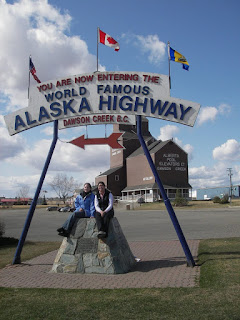
Over the years of extension work in rural BC, our research teams have met numerous tourism business owners who don't necessarily fit the mold of stereotypical "profit motivated" entrepreneurs. These "lifestyle entrepreneurs" are motivated to enter into business for non-economic reasons and for the lifestyle benefits that emerge. Lifestyle entrepreneurs are particularly attracted to tourism businesses because there are ample opportunities to blur the distinction between "producing and consuming experiences". For example, it is not uncommon to find entrepreneurs that love kayaking so much (consuming it) that they decide to transfer their skill set to produce it for others - thus starting a business to "finance their leisure pursuits".
Academics have been trying to get more familiar with lifestyle entrepreneurs in tourism for the past decade. Some of their insights are useful to share with those who are wanting to support or attract lifestyle entrepreneurs into their area. Gareth Shaw and Allan Williams (2004) found that the small scale entrepreneur in tourism is different than in other economic sectors and needs to be better understood. Tourism attracts lifestyle entrepreneurs for three reasons: 1) it is relatively easy to enter into business in tourism as it does not require professional licensing, formalized education or approval, 2) depending on the sector, low levels of capital are required to enter, and 3) skill sets applicable to entry are largely transferable from other industries. Add to this today's fast paced society and people's desire to achieve balance - and lifestyle entrepreneurship becomes an attractive avenue for personal fulfillment. Irena Ateljevic and Stephen Doorne (2000) have studied lifestyle entrepreneurs in tourism in New Zealand extensively. They have found that many of them are motivated by a concious rejection of economic and business growth models. While this might seem to be financial suicide, they found that these entrepreneurs were more often the instigators of niche market opportunities in tourism and were often instrumental in introducing innovation to the wider industry. These ideas often have the value added outcome that they stimulate wider regional economic development opportunities.
While I couldn't find stats on the number of lifestyle entrepreneurs in tourism in BC or Canada, my guess is that in rural areas, they are a significant portion of businesses (in a Cornwall study, one third of tourism entrepreneurs were lifestyle motivated). I arrive at this based on the percentage of entrepreneurs that we have encountered over the years, mixed with the observation that rural areas afford individuals the amenities that are likely to contribute to overall lifestyle motivations. It is my observation that we still make the assumption that all businesses have dominant profit motives and are seeking mechanisms to grown and expand their businesses. In making this assumption, we are likely going to miss out on opportunities to a) support the lifestyle entrepreneurs that are already operating in rural areas and b) attract more lifestyle entrepreneurs to rural areas. Both of these are critical to rural tourism development as our already limited product base in rural areas is projected to decline due to the exit of entrepreneurs who plan to retire (baby boomers are shown to dominate) and regions need to find ways to stimulate the addition of small businesses in order to develop experiences for visitors. Indeed - Richard Florida argues that the only communities that will survive are those that are able to attract creative people to locate in them - lifestyle entrepreneurs fit that mold.
So how do regions attract lifestyle entrepreneurs? What questions do we need to be asking ourselves to understand their motives better? My simple answer is - I don't know yet - but the best way for us to find out is to ask them. Some of my research on innovators in sustainability has already shown that these non economic motives are dominant among early adopters in tourism. The lifestyle entrepreneurs I have talked with are more than willing to share what their motives and business support needs are - and these are not necessarily the things that we would expect. Some want to close shop for a couple of months of the year, some want to limit exposure during the season, and others are hiring people who share their passion. These are not typically the business practices that tourism development experts are encouraging or expecting. So it may seem that we have a disconnect if our economic development ideas are based on a limited type of entrepreneur that is neither present or attracted to rural areas. Another important consideration for rural areas is to note that lifestyle entrepreneurs often decide to locate in an area after repeated travel to a destination (for leisure pursuits largely). This phenomenon has been dubbed "travel stimulated entrepreneurial migration" (Snepenger et al, 1995 as cited in Shaw and Williams).
Simply put, lifestyle entrepreneurs are an important asset for rural regions and we have a lot of work to do to understand what they need to settle, set up shop and serve visitors. Let's start the dialogue and listen.
Ateljevic, I and Doorne, S. (2000). Staying within the fence: Lifestyle entrepreneurship in tourism. Journal of Sustainable Tourism, Vol 8, No. 5, p:378.
Shaw, G. and Williams, A. (2004). From lifestyle consumption to lifestyle production: Changing patterns of tourism entrepreneurship. Small Firms in Tourism: International Perspectives, Elsevier Ltd.







